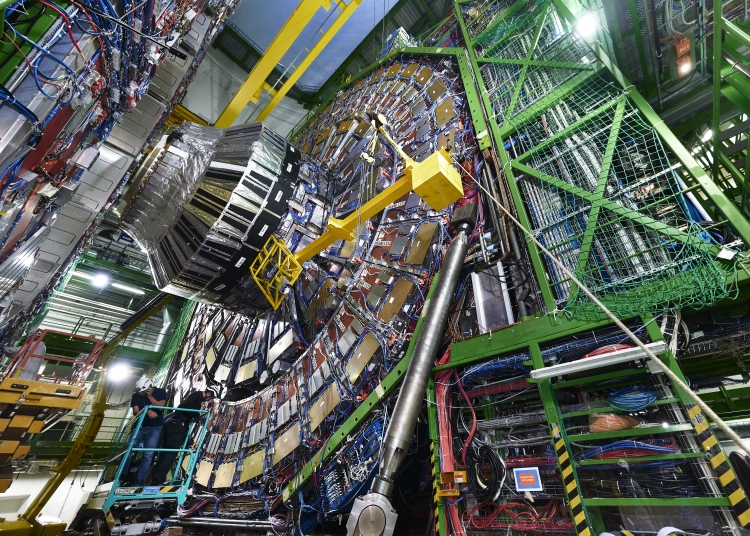
On July 25th, 2019, the very first GEM superchambers were installed into the CMS YE- endcap as part of the newest CMS muon subsystem, GE1/1. And while this was a fantastic accomplishment worth celebrating, it was only the beginning of the story.
Since July, the GE1/1 team members have been working 'round the clock to prepare and qualify GE1/1 chambers for the next round of installation. At the center of this action has been the QC8 stand, located in the GEM production laboratory in Prevessin, France. Capable of holding up to 30 GE1/1 chambers at once, the QC8 stand allows members of the GEM team to efficiently test the GE1/1 chambers using cosmic ray muons. Each chamber is hooked up as it would be at CMS, and data is then taken with the chambers, making use of the constant stream of muons that are created as a result of the collision of cosmic rays with Earth's upper atmosphere. This data allows the team members to determine the efficiency of each GE1/1 chamber, which is used to qualify the chambers as being ready for installation into CMS.
On the morning on September 24th, 6 superchambers (12 GE1/1 detectors) were transported to Point 5, where they awaited their descent into the CMS experimental cavern. They were met there by a team of technicians who carefully strapped the transport container to the overhead crane which would gently lower them down the 100m shaft to the experimental cavern (UXC) of CMS.
After their descent, they were met by a team of technicians who were eager to get started with the installation. The first superchamber was removed from the transport container and secured within a specialized installation platform. This platform was then secured to the same overhead crane that brought the chambers down into the experimental cavern, and carefully lifted to the top of the endcap nose, where the superchamber would be installed.
Once the superchamber was in position, the technicians joined it in mid-air, using a large cherry picker. This installation represented a difficult one, as the chambers would be installed into the very top of the nosecap, so the technicians had to make every movement with care so as to not damage any of the detector electronics of CMS. Once in place next to the superchamber, they coordinated with a third technician at the top of the support structure of CMS, who precisely controlled the movements of the overhead crane to get the superchamber in the exact position needed for installation.
But the technicians were not alone during this delicate operation. In addition to having the support of GE1/1 team members on the ground, the technicians provided a unique opportunity for a group of visitors to the CMS cavern. These visitors, a group of young men and women from Pakistan, were able to witness the installation first-hand, and see for themselves the incredible leaps forward being made at CMS.
With everything in place, the technicians made short work of installing the superchamber and returned to the ground. But there wasn't any time for rest - the next superchamber had to be prepared for its own installation. One by one, each superchamber was made ready, until finally each was safety nestled in its place and CMS now boasted 12 new muon detectors.
It was a job well done, but a job not nearly over, as the process is set to begin again soon with a new set to eventually install 72 superchambers by the and of LS2. As always, we continue to move forward, each new step leading us towards a bright new future for CMS in the coming years.
- Log in to post comments

